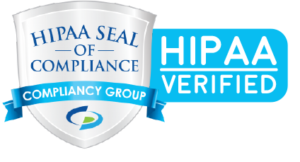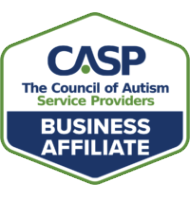Whether a provider is in-network or stays out-of-network, insurance companies usually require an authorization before reimbursing for ABA therapy. If you are a provider that is new to working with insurance, the process can be a bit of a puzzle. Let’s put some of the pieces together to help make your work more efficient and more productive.
Before Starting Therapy
First, streamline the intake paperwork gathered from families. While each insurance company may seem to have its own set of rules, a common set of requirements have emerged. You can fit the required information into a simple set of intake paperwork completed by the family. Be mindful that families often fill out countless reams of paper when going through the diagnosis and treatment process with a child. While this information is necessary, try not to add anything extra!
Basic intake information needs:
- Demographic Info: Child’s name and date of birth
- Medical History: Date/Age of diagnosis, other treatment the child is currently receiving, past treatment, medications, and allergies
- Family History: Who does the child live with, does the family have any cultural considerations (some insurance companies do require you to ask this), number and age of siblings in the home
- Diagnostic report: Commercial insurance policies will usually only cover ABA therapy if a child has a diagnosis of Autism Spectrum Disorder. While children without an ASD diagnosis may benefit from ABA therapy, insurance will not pay for treatment. In most cases, the insurance company is looking at the state mandate that requires coverage of ABA therapy, and the state mandates require that ABA must be covered if a child has an ASD diagnosis. Some families have successfully won appeals for other diagnoses, but this is not common. As a provider, it is best practice to obtain the diagnostic report to confirm the diagnosis. Otherwise, an insurance company could either refuse to pay or could recoup money if it is later discovered that a child did not have diagnosis. (Note: Other funding sources may not require an ASD diagnosis such as school districts or California Regional Centers, but this information is specifically in regards to commercial insurance.)
- Copy of insurance card front AND back.
Once you obtain information from the family regarding their insurance coverage, you should always verify that insurance does cover ABA therapy and talk to families about their financial responsibility. See previous blog about benefit verification.
Your intake process can certainly vary to best fit your practice. However, once it’s time to move forward, getting paperwork in place before any services are rendered will help your business stay on track.
Authorization for Assessment
At the start of services, insurance companies will authorize hours used to complete an initial assessment. The basics of obtaining an authorization for assessment are usually simple. You may need to call into an authorization department or send information via fax (yes,…fax). Some insurance companies will have a form you need to fill out, and you will often need to submit the child’s diagnostic report.
Most assessment authorizations provide about 8 to 12 hours. You may be able to request more than the basic hours for assessment. However, this can be difficult and may end up delaying services. When working with insurance companies, brainstorm with your clinical team to find the best design for assessment hours (splitting hours between the initial assessment hours and the ongoing authorization). Being flexible in how you schedule and work through assessments can help your business get fully reimbursed for your work without compromising clinical needs.
Ongoing Authorizations
After initial hours are used, a treatment plan must be sent to the insurance company along with a request for ongoing treatment (a breakdown of how many hours you need for each type of service). While it may be difficult to complete a full functional behavior assessment in the hours provided for assessment, you will need to use that time to at least create a framework for your initial treatment plan. As you spend more time with the child, further data can be gathered and goals written for your next treatment plan update.
Again, some insurance companies have a form to complete and send with the treatment plan. A few companies now authorize hours via live reviews over the phone, including Cigna and United.
Tip: Be sure to support your BCBAs with the live review process. The phone calls can be intimidating, and insurance reviewers can challenge the request. Providing training and role plays can help prepare clinicians. And, the senior clinician should always join the call.
While you do not have to submit a treatment plan prior to the phone review, you need this documentation ready in case you have to support your request by sending in documentation.
Assist your team by having a common template that you use for all treatment plans. Remember your initial treatment plan is just that – the first one. You will have time to build on the initial plan and adjust along the way. Some insurance companies (United Behavioral Health, Value Options/Beacon) have templates online that show the minimum requirements for treatment plans. While you do not have to use them, reviewing these examples will give you ideas for your own treatment plan template.
After submitting your information, it is good to follow up within a few days to confirm your information was received. If all information is correct and the authorization department does not have any questions, you should receive an authorization back within about 5-7 business days (longer for some companies). The authorizations for ongoing treatment often span a 6-month period. It’s important to check in with the family during this time to ensure no changes occur with their insurance policy. If a family does change insurance, you must restart the process with the new insurance.
Tracking Authorization
Once you get authorizations in place, remember to track the expiration dates. At a minimum, submit for your next 6-month authorization at least two weeks in advance. If you are out-of-network, allow more time to be sure you can get the approval.
While authorizations can seem like extra hoops to jump through, staying organized and getting information submitted early will ease the burden and keep you on track.
What roadblocks and issues have you come across in your authorization process? Working together, we can help you get through and get your company reimbursed faster and more accurately!





